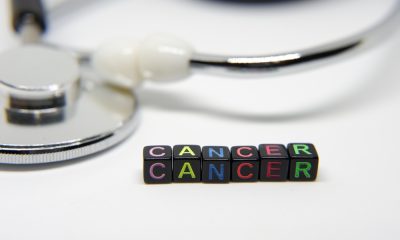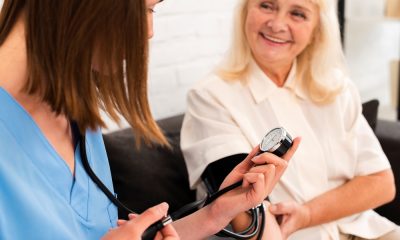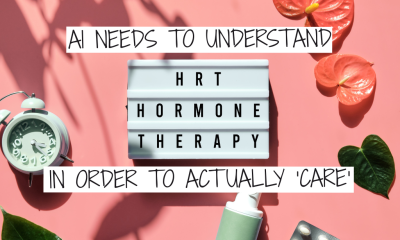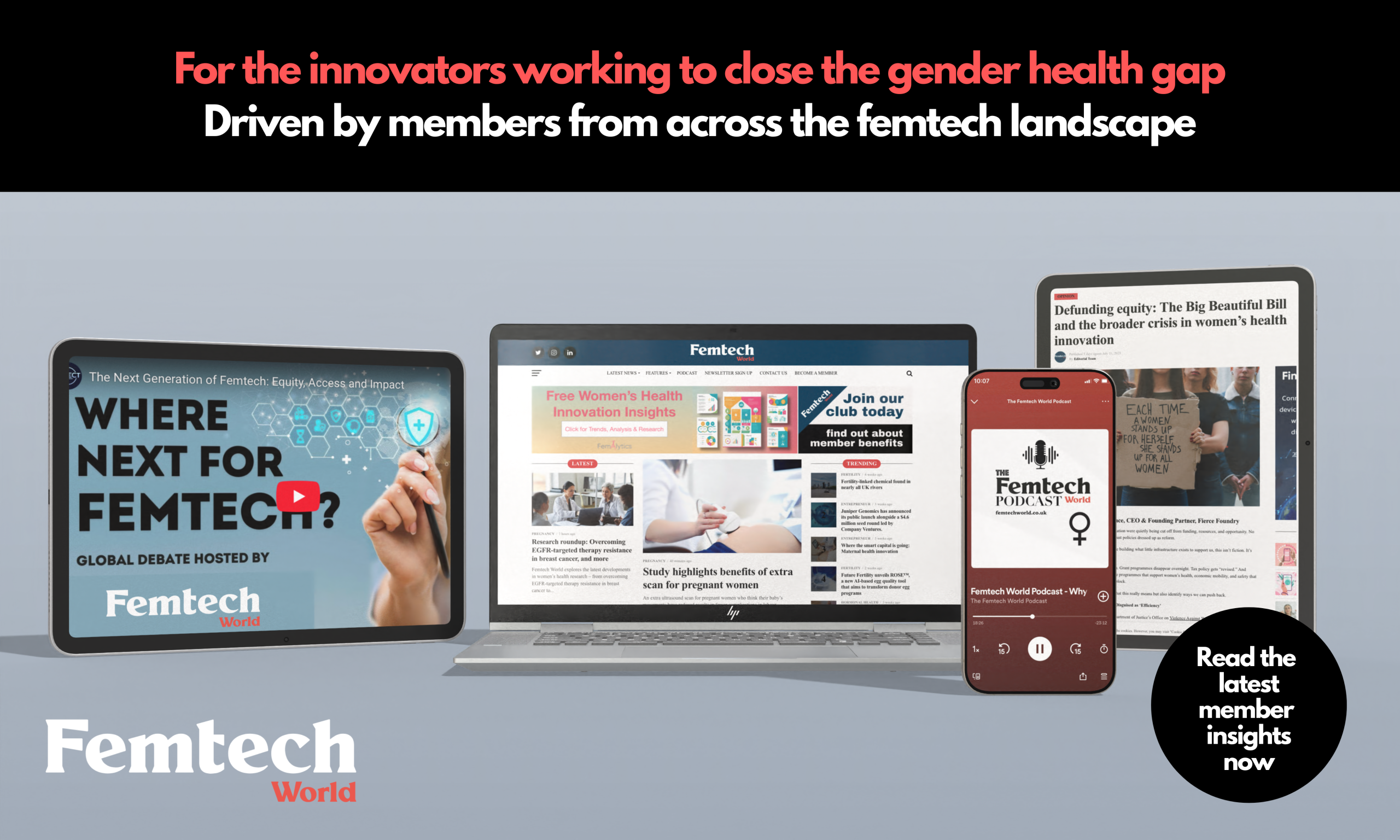Entrepreneur
Future Fertility unveils ROSE™, a new AI-based egg quality tool that aims to transform donor egg programs

As demand for egg donation grows around the world, Future Fertility is bringing transparency, predictability, and reliability to donor oocyte programs.
The company has announced the launch of ROSE—a new AI-powered oocyte quality workflow and report built specifically for egg banks and donor egg programs.
Jullin Fjeldstad is Head of Clinical Embryology and Scientific Operations at Future Fertility.
Fjeldstad said: “Egg banks have historically lacked tools to assess and manage donor oocyte quality in an objective way.
“ROSE™ brings standardisation into the equation, offering new AI-based insights and a workflow solution that optimise how donor eggs are managed, grouped, and allocated.”
With the number of IVF cycles involving donor eggs increasing globally, clinics and egg banks face rising pressure to deliver quality assurance in donor oocyte distribution.
Experts estimate that donor eggs are used in approximately 10 per cent of all cycles.
Meanwhile, the global donor egg IVF market is projected to reach $6.6 billion by 2032, up from $2.3 billion in 2022.
ROSE provides egg banks with a clinically validated, AI-powered tool that predicts the likelihood of each oocyte developing into a high-quality embryo (blastocyst).
Powered by the world’s largest dataset of oocyte images and associated reproductive outcomes, ROSE has been clinically validated for use with donor egg populations— enabling egg banks to:
- Optimise oocyte distribution by expected blastocyst outcomes
- Provide objective quality assurance for donor oocyte groupings
- Track and manage donor cycles and oocyte inventory with an AI-based tool and custom workflow solution
- Build trust with receiving clinics through intuitive, image-based reports
ROSE was developed in consultation with real egg bank partners who helped define requirements and refine the platform’s capabilities.
Dr. Catello Scarica, Scientific director at New Fertility Group, noted: “We’ve been impressed by how the ROSE tool supports quality control and decision-making in our donor cycles. It gives our team greater confidence in the eggs we distribute and enables better alignment with receiving clinics.”
WeBank’s Development Director, Dr Natalia Basile added: “ROSE is transforming how we manage donor eggs.
“The objective scores, traceability, and reporting help us organise inventory and reduce uncertainty—especially valuable when outcomes don’t meet expectations.”
From a clinical workflow perspective, the platform is designed for seamless integration. ROSE connects directly with microscopes and laser systems, allowing egg banks to capture 2D oocyte images in real time and securely upload them to the cloud.
Within minutes, the AI model—proven to be more accurate than embryologists in multiple studies—delivers predictions about blastocyst potential, with a workflow solution that manages, tracks and optimises groupings of oocytes for distribution.
Dr Danilo Cimadomo is Global Manager of AI and Data Management for Embryological Research at IVIRMA Global Research Alliance.
Cimadomo said: “The future of egg donation lies in complementing information about egg quantity with eggs’ blastulation potential to personalise the number of oocytes allocated per recipient.
“Tools like ROSE, can help maximise success while minimising the number of surplus embryos by matching patients with an ideal number of high-quality eggs based on their unique profile.”
Rafael Gonzalez, Global Head of Sales and Commercial Strategy at Future Fertility, added: “Clinics are asking for greater confidence when it comes to donor egg quality, both recipient clinics and donor egg banks.
“ROSE provides a scalable, data-driven way to meet that demand—giving both donor labs and recipient clinics a shared, objective language to talk about egg quality.”
Opinion
Women’s health is not niche: It’s the future of healthcare

By Melissa Wallace, CEO & Founding Partner of Fierce Foundry
Just a few years ago, so many conversations around women’s health in the U.S. felt like they were still just making the case for why investment mattered. Panels, white papers, TED-style talks pointed to under-funding, data gaps, structural bias. But something has shifted. Across healthcare and investment communities, the tone now is more about when, not if, and increasingly how.
A compelling indicator of this shift arrived in early August, when the Gates Foundation announced a $2.5 billion commitment to advance women’s health research and development through 2030, fixing its spotlight on long-neglected areas such as menopause, heavy menstrual bleeding and endometriosis. (Reuters) Paired with this, industry commentary emphasises that med-tech devices specifically for women are gaining investor interest at a notable pace. (Medical Device Network)
This sort of capital commitment and investor signal was rare even just a couple of years ago, it underscores a rising belief that women’s health is not just a moral imperative, but a strong market opportunity with measurable returns.
The momentum is palpable here in the U.S.: deficits in research and care persist (for example, women’s health startups captured a record ~$2.6 billion in venture funding in 2024, up from ~$1.7 billion in 2023). (BioPharmadive) And while the sector remains under‐capitalized overall (some reports suggest only ~2% of healthcare investment goes to women’s‐health solutions) (Morgan Lewis) the trajectory is unmistakable.
What’s causing the flip?
- From niche to mainstream: The definition of “women’s health” is expanding in the U.S. It’s no longer just fertility or gynecology, it now encompasses perimenopause, longevity, autoimmune conditions, cardiovascular issues in women. “We’re finally seeing women’s health shift from the under-invested side-line to an innovation category that VCs believe can outperform,” said Raysa Bousleiman, Senior VP for Investor Coverage at Silicon Valley Bank.
- Data gaps turning into data opportunity: For decades, women’s biology, hormonal cycles, mid-life transitions were under-researched. That created both risk and opportunity. Today, tools such as AI, advanced imaging and genomics are closing those gaps. One insightful analysis argued that AI could fundamentally reshape women’s health by tackling “data deserts, bias, and gaps.” (World Economic Forum) Investors increasingly see that the business case is real, not just the moral one. The report “The WHAM Report” frames women’s health investment as “a pathway to societal impact, economic resilience and sustainable growth.”(Wham Now)
- Exit and scale signals: The proof of performance is emerging. In the U.S., scale players are projecting women’s health lines hitting milestone revenues. In Europe, a company raised hundreds of millions targeting ovarian cancer and perimenopause. These “top-of-the-chain” moves may feel distant to early-stage founders, but they shift perception fundamentally: women’s health is not a boutique play, it’s investable, scalable, strategic.
- Shift in investor mindset: No longer is women’s health simply a “good cause”; it’s a growth category. Fund managers are citing track records, asking to raise dedicated funds, deploying dollars not just to be socially responsible but to achieve outsized returns. That shift changes how founders engage, what boards expect, what exits look like.
Still, we must be candid: founders in this space continue to face headwinds. For example, one founder, Valentina Milanova of Daye, shared the frustrating anecdote: “I’ve had investors ask me why our tampons have string on them.” That kind of query signals bias, not just about product design, but about the perceived seriousness of the category. Her pragmatic advice to early-stage founders: consider grant funding, especially in Europe, as founder-friendly capital that can help bridge to private investment.
What does this all mean for U.S. organizations and the broader ecosystem?
For healthcare organizations: The signals are clear. Women’s health is moving from underserved niche to strategic priority. In the U.S., institutions and health systems that double-down here now may gain first-mover advantage, whether by building multidisciplinary women’s health centres, partnering with innovative startups, or harnessing data insights tailored for women. The business case is sharper than ever: women make up 51 % of the population, drive ~80 % of healthcare decisions, and still face care gaps. (Wham Now)
For investors and founders: This is a moment. The conversation is no longer simply “why invest in women’s health” but “how to invest in women’s health at scale”. Founders should be ready to show performance, not just potential. Investors should demand sex-disaggregated data, metrics beyond fertility, and a broader view of women’s life-course care. The heavy lifting remains but it’s now being valued.
For the market at large: The under-served areas are many perimenopause, mid-life wellness, autoimmune conditions in women, hair loss, anorectal care, longevity for women, all of which were once sidelined. That white space, combined with rising capital and broader recognition, fuels a powerful market dynamic.
The story of women’s health is being rewritten. Where once the conversation focused on why, today it increasingly focuses on how. The category is shifting toward performance, scale, credibility. For healthcare organizations willing to commit whether via partnerships, internal innovation or capital deployment, this is not just a mission. It’s a strategic opportunity. And the message is resonating: women’s health is not an afterthought anymore. It’s one of the fastest-growing, most under-leveraged frontiers in healthcare.
News
Cutting through the noise in femtech – key takeaways from Women’s Health Week 2025

The flagship women’s health summit brought together over 400 visionary founders, funders and innovators, with a shared mission of transforming women’s health worldwide.
This year’s Women’s Health Week, which took place at the Barbican, London from 14-17 October, showcased a sector once considered by funders to be too much of a ‘niche’, meeting a crucial unmet need with huge market demand.
Investments are outperforming their value, regulators want to speed up the route to market, and clinical validation is cutting through the noise and demonstrating real results.
There is a buzz about the femtech sector – or at least there was in the Barbican last week – but experts have urged founders should move forward responsibility, building ethics and equity into their innovations.
Here’s our takeaways from the key conversations at Women’s Health Week.
1. Women’s health is outperforming – but angels and influencers are crucial for raising capital
Investment in women’s health is outperforming, and this trend is expected to continue, according to the panel at Women’s Health Week on Thursday 16th, where fund managers and founders highlighted significant returns, growing institutional interest, and the critical role of early-stage backers.
Sanji Chotai, a senior investment manager at British Business Bank, says she is seeing “really encouraging data” and anticipates more “outperformance”, particularly in medtech, which is drawing interest thanks to “shorter timelines to regulatory approval” and rapid commercialisation.
Series A and B activity is also picking up, but the panel agreed that early-stage capital and angel investors remain essential.
“My first angel investment in a women’s health company, I think on Series A, is going to be 20x on multiple and for our fund, it’s going to be around 9x,” said Trin Linamagi, founding partner at Sie Ventures.
“We need to take bigger bets and double down – and actually put the capital behind these businesses early on.”
Having driven successful campaigns for Soulcycle and Barry’s Bootcamp, Tatum Getty, now a founding general partner at THENA, also highlighted the importance of influencers – and not just on Instagram.
“Who is that person who believes in what we’re building and will tell their friends,” she said.
“Women have not been traditional investors they are more risk averse, smaller investment but bigger impact. They add so much more value than the amount of capital that they contribute.”
2. NICE and new pathways for health technologies
During a discussion on mastering Europe’s regulatory process, a representative from the National Institute for Health and Care Excellence (NICE) outlined how new rules-based approval routes, now being introduced for health technologies, are designed to speed access to innovation.
The body is also better aligning processes with the Medicines and Healthcare products Regulatory Agency (MHRA) to reduce the time it takes to regulatory approval.
“We’re taking forward the rules-based pathway for health tech,” said Kendall Gilmore, a senior advisor at NICE.
“Developing a model more similar to the medicines pathway, where, for some products, it goes through the MHRA, through NICE and then comes with a recommendation that has a funding mandate attached.”
The pathway, currently being developed will see health technologies assessed in a similar way to medicines with the first products approved from April next year.
NICE currently evaluates only a fraction of the 500,000 technologies used daily in the NHS. While a NICE recommendation is “not mandatory”, it can be a “powerful signal” to the NHS.
NICE is constantly “horizon scanning” for “disruptive products” further down the pipeline and is engaging more directly with innovators, industry associations and international partners to identify promising technologies earlier, and a new early value assessment route is giving promising products a faster track.
“If it meets an unmet need, it should be used with further evidence generation,” Gilmore explained.
“This is particularly relevant for digital health and diagnostics.”
3. Scientific validation is the most effective way to ‘cut through the noise’
In a panel exploring how to “cut through the noise” in femtech, founders were urged to bake credibility into product design from day one, with scientific proof and clinical validation the sharpest differentiator, according to Soun Rakshit, of MV Health.
“You have to spend probably two years going through the R&D process,” said Rakshit.
“That is the best and probably the only way to do it, so that by the time you get regulatory approval, you have already had significant patient feedback and iteration.”
Earning trust also means collaborating with experts who understand the problem, as Helen O’Neil, founder of Hertility, explained.
When in the development stage, O’Neil reached out to professionals, including obstetricians and gynaecologists to understand the right questions to ask based on their “clinical intuition and personal experience”.
Rakshit added: “If we can show true clinical evidence, and it does take time, it is the best way to cut through the noise.”
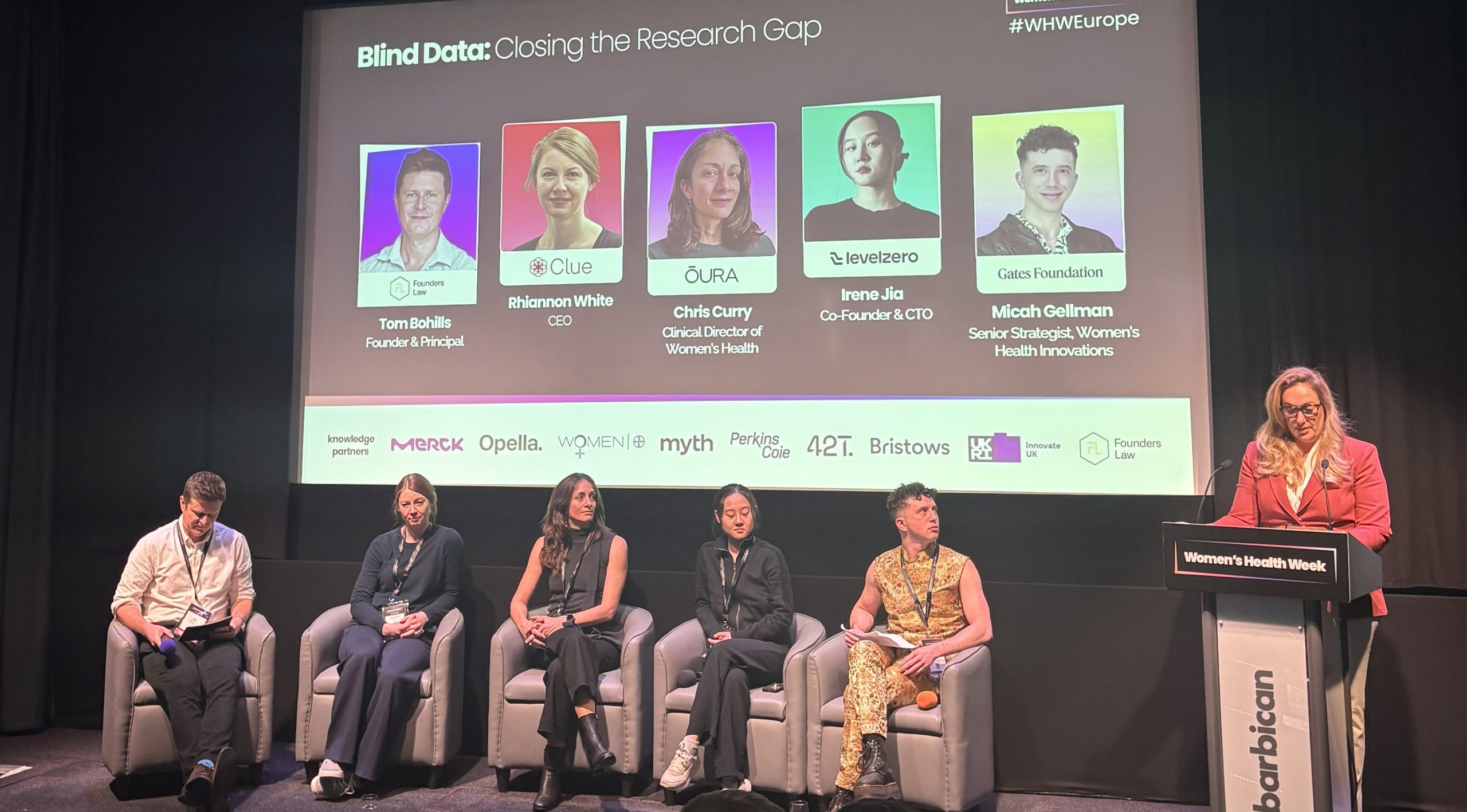
4. Bias in AI is ‘real and harmful’ – and founders need to know how to address it
Experts discussed the role of AI and its potential to both help and harm women’s health, urging proactive testing and human oversight to avoid the risk of decades of a “male default model” being implemented into new solutions.
“AI that’s trained on that skewed data can really fail women,” said Sarah Montgomery Taylor, clinical lead of GenAI evaluation and scaled services at Google, highlighting familiar examples such as heart-attack presentation.
“Biases are real, and they are really harmful, and so being aware of them is so crucial.”
Panellists also flagged “measurement bias” and the “historical dismissal of women’s pain,” where systems trained on those records “can learn to deprioritise” certain signals.
Beyond bias in diagnostics, Marinos Ionnides, head of software and AI medical devices regulation at the MHRA, highlighted the risks of implementing AI in areas where there may be hidden bias.
“I’m quite worried about the deployment of software AI in places where we aren’t we didn’t know we would be finding bias [such as] appointment booking,” he said, adding that in these “unknown unknowns,” “the regulator has their greatest role”.
Founders were urged to be responsible when scaling AI, introducing guardrails such as building in equity and collecting data from the very beginning for “rigorous real-world validation”.
Clinicians need to be able to test the product and understand it to build trust, while regulatory processes should be “adaptive”, offering “clarity on what the path is to market”.
Chen Davies, founder at Anya, shared a real-world example of how products and content tailored for underserved groups drove measurable change, including a “10% population-wise” rise in breastfeeding rates in a deprived area of Blackpool after six months.
“AI should gradually complement human support without replacing it,” said Davies.
5. Consumer data can play a critical role in building the clinical evidence-base
During the final panel, participants argued that continuous real-world data, paired with clinical benchmarks, is the fastest way to fix women’s health’s “male baseline” problem and turn lived experience into evidence.
Dr Chris Curry, clinical director for women’s health at Oura, argued that wearables are “one of the big unlocks” by collecting data that gives the “whole picture of the human”.
But tracking can – should – meet clinical standards, with the panel pushing for globally representative consumer datasets.
“I see consumer data if it’s truly representative, if it’s truly globally representative, being critical,” said Micah Gellman, a senior strategist for women’s health innovation at the Gates Foundation.
“It helps us calibrate and link consumer insights and lived experience to clinical anchors and value outcomes… this kind of consumer data is one avenue that we have to really change investor appetite.”
Rhiannon White, CEO of Clue, which has a long-running research collaboration with Oura, including collecting symptom tracking data on perimenopause and pain, added that women’s spending power can actually steer where future R&D should be focused.
“We are able to shape and direct where people will put their research and put their development with our spending power,” she said.
6. The crisis in government support can be an opportunity for more innovative funding pathways
With the Gates Foundation recently committing an additional US$2.5bn for research in women’s health, Gellman also reframed the reduction in government funding for women’s health – such as that seen under the Trump administration in the US – as an opportunity for more innovate financing.
“There is a real opportunity for European and Asian government funding to step up and fill some of those gaps,” said Gellman.
“An opportunity for government funding and philanthropic funding to take new forms and to be partnering in new ways to catalyse innovation and to work with academics and industry players.”
Rather than a binary between grants and VC, the panel highlighted “blended financing mechanisms, venture philanthropy… different kinds of outcome-based financing” with public and philanthropic dollars used “to de risk, early-stage investment”.
Gellman added: “This crisis that we’re in, in terms of government funding is also an opportunity for innovative financing.”
The comments brought the conference full circle, reminiscent of those made earlier in the day, by Tatum Getty, who highlighted: “Women and small amounts of capital, can make a big difference.”
Diagnosis
The #1 complication of childbirth: The crisis hiding in plain sight

By Dr. Jennifer L. Payne and Alisa Marie Beyer
Postpartum depression (PPD) isn’t just the “baby blues.” It’s the most common complication of childbirth, affecting 1 in 5 new mothers, and yet it remains dangerously underdiagnosed, misunderstood, and too often untreated.
Baby blues vs. postpartum depression
Up to 80 per cent of new moms experience the baby blues: brief emotional shifts, crying, irritability, mood swings, that typically resolve on their own within 1–2 weeks after birth. But PPD is different. It’s a serious medical condition that can begin during pregnancy or emerge weeks or months after delivery. It lasts longer, hits harder, and requires clinical care.
The Impact of PPD:
- 50 per cent of women with PPD receive no treatment
- PPD contributes to nearly 1 in 4 maternal deaths
- It costs the United States US$14+ bn annually in healthcare
Many women don’t recognise what they’re experiencing. Others are too overwhelmed, ashamed, or unsupported to seek help. Meanwhile, our healthcare system is still rooted in reactive models that rely on self-reporting, often when a mother is already in crisis.
A predictive breakthrough: Introducing myLuma
At Dionysus Health, we believe mothers and babies deserve better. That’s why we developed myLuma, the first clinically validated prenatal blood test that predicts a woman’s risk of developing PPD as early as 28 weeks into pregnancy.
Why this matters: A shift from reactive to predictive
Traditionally, PPD is diagnosed after symptoms appear often late, inconsistent, and subjective. myLuma changes the timeline. It gives providers a clear, scientific window into risk before birth so they can prepare personalized support and interventions before a crisis hits.
How it works: The science behind the test
The core of myLuma is epigenetics: the study of how stress and environment affect gene expression without changing the DNA itself. During pregnancy, a woman’s body undergoes massive hormonal, neurological, and emotional changes. These shifts leave molecular fingerprints – biomarkers – in the blood. Using these markers, myLuma predicts PPD with up to 85 per cent accuracy.
Our scientific journey:
- 2014–2020: Discovery of epigenetic biosignatures linked to PPD
- 2020–2022: Patent filings, US$4.5m NIH funding, and clinical validation in 600+ patients
- 2022–2024: Biomarker-brain function mapping, U.S. patent secured, and national accelerator support
- 2025: Awarded US$10m by the Department of Defense to expand clinical trials and pursue FDA approval
So… is this really the first blood test to predict PPD?Yes. Thanks to a decade of innovation in molecular diagnostics, AI-powered analytics, and epigenetic discovery, myLuma offers a new lens into maternal mental health that was never before possible.👉 It’s a third-trimester blood test.
👉 It offers early, personalised insights.
👉 It empowers OBs, midwives, and health systems to intervene before it’s too late.
The solution: Prediction + care coordination
Prediction alone isn’t enough. That’s why Dionysus Health has partnered with Mammha, a leading perinatal mental health platform, to ensure every woman flagged as high risk is met with wraparound support: behavioral health, therapy, doula access, medication planning, and more.
This new model combines biological insight + human support: a proactive care plan tailored to each mother’s unique needs.
What Is a clinical study—and what’s live now?
A clinical study is a carefully designed research trial used to evaluate the safety, effectiveness, and real-world impact of a medical test or treatment. Right now, Dionysus Health is leading two major studies, funded by the U.S. Department of Defense, to validate the clinical utility of our test, myLuma™, the first prenatal blood test that predicts a woman’s risk of PPD.
Study #1: PREVAIL (UVA + Inova Health System) is a 1,000-participant study evaluating how the availability of biological risk information for PPD during pregnancy might influence healthcare decision-making and patient outcomes.
The study follows participants from their third trimester through postpart
um to assess impacts on referral patterns, treatment engagement, and depression symptoms. This information is being used solely for research purposes and is not intended for clinical decision-making outside of the study.Study #2: BRAVE: This observational study follows 1,000 pregnant women using both blood and saliva samples, testing the accuracy of the myLuma biomarkers without sharing results with participants or doctors.
It’s designed to validate the algorithm, strengthen the FDA approval pathway, and expand accessibility—especially for underserved populations or those in rural areas.
Together, these studies are paving the way for myLuma to become the first-ever biological test to predict a mental health condition before symptoms appear, a potential game-changer in maternal care.
Setting the standard in maternal mental health
PPD has long been an invisible crisis. With myLuma, we’re finally changing that. This isn’t just a test, it’s a paradigm shift.
Because when we see it coming, we can act sooner, intervene smarter, and help moms thrive, not just survive.
The path ahead
myLuma launches commercially in October 2025, with clinical pilots already underway in OB and IVF clinics in California, Florida, and Texas.
Together, we can rewrite the postpartum story for millions of women.
Because when mothers thrive, families flourish, and the entire healthcare system benefits.
About the authors
Dr. Jennifer L. Payne is the chief medical officer at Dionysus Health and a leading psychiatrist and researcher in reproductive mental health. She is the founder of the Women’s Mood Disorders Center at Johns Hopkins, vice chair of research at the University of Virginia, and director of the Reproductive Psychiatry Research Program at UVA.
Alisa Marie Beyer is a healthcare executive, birthing professional, and entrepreneur with over 20 years of experience bridging birth and business. As chief operating officer of Dionysus Health, she leads commercial strategy for myLuma, a pioneering prenatal test predicting postpartum depression risk. She also founded Let’s Talk Birthy, providing childbirth education for first-time moms.

 Hormonal health3 days ago
Hormonal health3 days agoDozens of women report suffering painful burns after using Always sanitary towels

 Ageing3 weeks ago
Ageing3 weeks agoFDA plans to revise black box warning on menopause hormone therapies

 News2 weeks ago
News2 weeks agoAI-powered women’s health companion Nexus launches in UK

 News1 week ago
News1 week agoWomen’s health innovations recognised in TIME’s Best Inventions 2025

 Hormonal health3 weeks ago
Hormonal health3 weeks agoScientists turn human skin cells into eggs in IVF breakthrough

 News3 weeks ago
News3 weeks agoDaily pill could delay menopause ‘by years,’ study finds

 News2 weeks ago
News2 weeks agoAncient herb to modern must-have: Why ashwagandha is capturing UK women’s attention
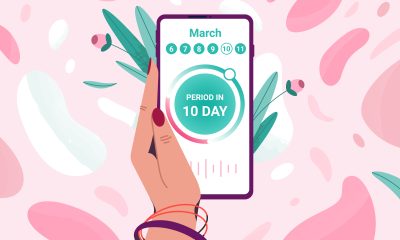
 Mental health2 weeks ago
Mental health2 weeks agoMenstrual cycle affects women’s reaction time, study finds






